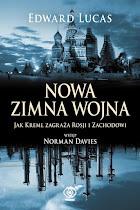Hungarian history laid bare on the square
By Edward Lucas
This week the world commemorated the failed uprising of 1956, when Soviet tanks crushed Imre Nagy’s brief and brave attempt to make Hungary neutral and democratic. Before the commemoration, the smell was partly of that year, partly of 1989 and partly of something unpleasantly.
Hungary’s government wanted the event to be a solemn bipartisan commemoration of a national tragedy. But the square outside the parliament in Budapest, when I visited last week – before it was cleared by police – was occupied by a month-old tent village of protesters, demanding the resignation of Prime Minister Ferenc Gyurcsány. He has admitted on a leaked tape that his government had systematically lied and done nothing.
There’s a tempting single narrative here. Gyurcsány’s government – mostly ex-Communists – is a direct descendant of the Soviet collaborationist regime. They have turned power into wealth, and wealth back into power again. They have ruined the country and betrayed democracy. How dare they claim any part of the spirit of 1956? Just as in 1989, people power will topple the bad guys and restore democracy. So wave the flags, sing the good old songs and weep a patriotic tear for the suffering Magyar homeland.
But it is a lot more complicated. For a start, Imre Nagy was a Communist. Had it not been for 1948, when the Communist police state took full power, there would have been no need for the heroics of 1956. I sympathise with that. Those persecuted since the start have always looked askance at born-again
allies like former Communists-turned Social Democrats whose disillusionment with the dictatorship of the proletariat coincides so neatly with the end of their own careers.
Yet Nagy behaved heroically and paid for it with his life. In 1988 I went to Hungary to lay flowers on his grave – he had just been reburied with full honours. My friends in the dissident movement, including a sharp-tongued young man called Viktor Orban, were scornful: “Why lay flowers on a Communist’s grave?”
There’s another complication too. Gyurcsány’s critics mourn another mutilation, geographic not political: Hungary lost huge territories such as Transylvania after the First World War. Its traditional coat of arms illustrates this well. St Stephen’s crown and modern Hungary’s emblem are just one part of a shield patchworked with the symbols of places that are now in Croatia, Romania, Slovakia and Serbia.
“I’m not sure that my Slovak friends would like that badge,” I remarked mildly, buying one from a nice old man. He
looked at me coldly. “They were never a proper country, not once in their history.” Did he really believe Hungary would regain its lost territories? “First we get rid of Gyurcsány,” he replied.
Other stalls were selling seamier material, ranging from ultranationalist emblems to anti-Jewish books and a translation of the ludicrous Holocaust-denial fantasy Did Six Million Really Die? I wondered why the beefy, close-cropped security guys who guarded the tent village couldn’t tell the hate-peddlers to shut up shop.
Were I Hungarian, I would find it a hard choice: sleazy chancers inside the parliament; nutcases and thugs outside.
The answer is to respect history, not to exploit it. I recently came across a simple, fascinating project called “I lived Socialism”. It publishes memories – anyone’s memories – of that era on a website. Anyone can write in. Sadly, it’s confined to Bulgaria, so far. It would be a worthy memorial to 1956 if Hungarians set up something similar. What this anniversary, like so many others, really embodies is the complexity of the captive nations’ history. That demands reflection, tolerance and humility, not brash certainty.
Friday, October 27, 2006
Hungary from European Voice
Subscribe to:
Post Comments (Atom)
























No comments:
Post a Comment